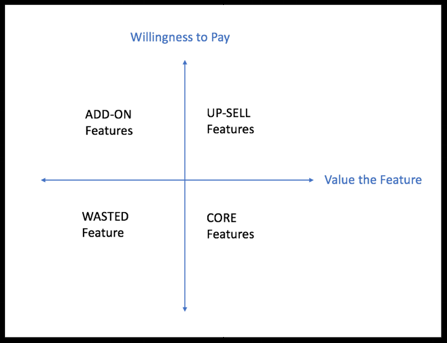 Which of the following will generate the highest return?
Which of the following will generate the highest return?
- More customers
- Keeping customers longer
- More revenue per customer
Any one of these can grow revenue. But one has been shown to consistently bring in a higher return on your investment. Most businesses say they are focused on these in the order of the list: adding more customers, than keeping them longer, and finally getting more revenue per customer.
The problem is that the research shows that a focus on more customers is the wrong path to maximize your return. And that it leads you to build the wrong solutions.
The research was presented at Inbound 2018 by Patrick Campbell of ProfitWell. Patrick’s session was on using data to maximize retention and return on investment. They have worked with hundreds of clients with a subscription-based model of services, yet it can apply to any business that develops solutions using an array of features.
The research shows that this is the order to focus on for the highest return:
- More revenue per customer (highest return)
- Keeping customers longer (medium return)
- More customers (lowest return)
Why is “more customers” the lowest return? One reason is you need to keep modifying your product or your model to please everyone. You end up building high-level solutions and try to price them for the low end of the market. When the focus is on volume, you also tend to keep adding more and more features to the core product to bring in that next client.
In order to increase revenue per customer, you need to do a good job of finding out what customers are willing to pay more for and what you are wasting your time on. Patrick provided a simple matrix to illustrate this. We begin by looking at two variables about the features we add. One is “willingness to pay,” and the other is how much they “value the feature.”

- UPSELL: When willingness to pay is high, and the value placed on the feature is high, you should be charging more. These are differentiating features that are an opportunity to upsell the client, but not everyone may want them.
- CORE: When the value to the client is high, but they are unwilling to pay extra, you need to add this as a core feature built into the base price of the solution. Your core product should be priced to cover all the features you need to include.
- ADD-ON: When only some clients value the feature, but those who do are willing to pay more for it, this is an add-on feature. Add-ons need to be limited to the options where the revenue you could bring in is worth the complications it will add.
- WASTE: And when few clients value the feature and there is little interest in paying more, this is a waste of your time. Seems obvious, but many products are loaded with these features simply because a client asked for them.
Most of you are salespeople or sales managers and may not think you have access to these kinds of product decisions. Yet, each time you are building a client solution, it’s good to consider the matrix and where each feature falls.
A simple question to ask is, "Does the client really value this feature?" And if they do, are they willing to pay extra for it or does it need to be part of the core product for everyone?


